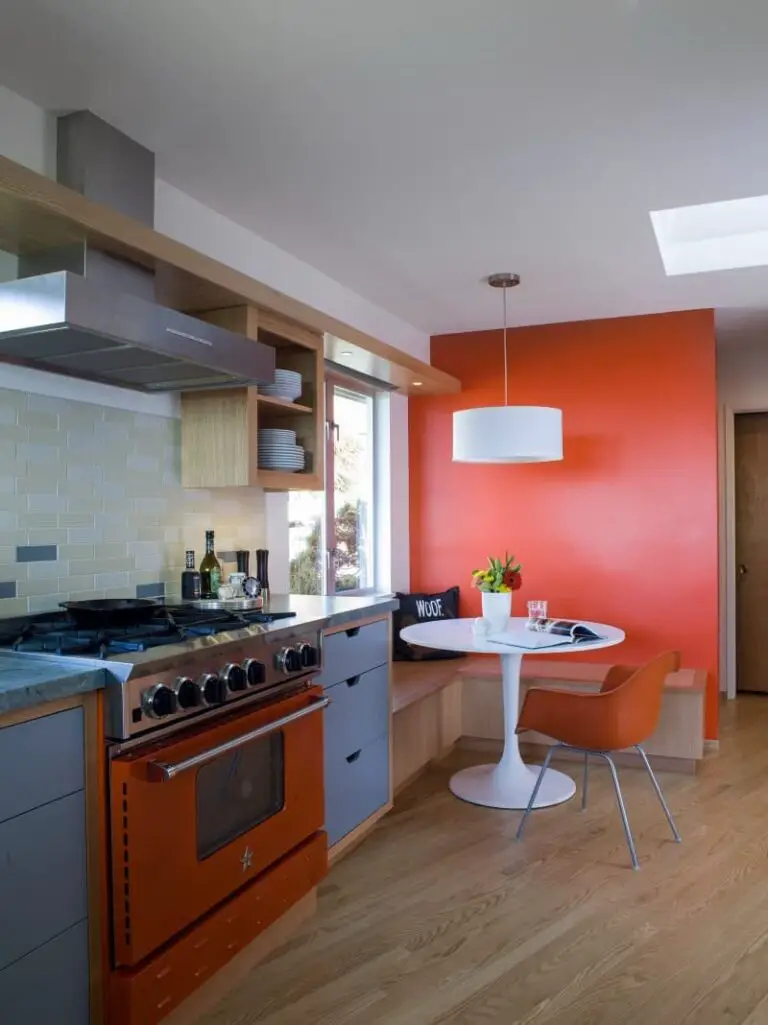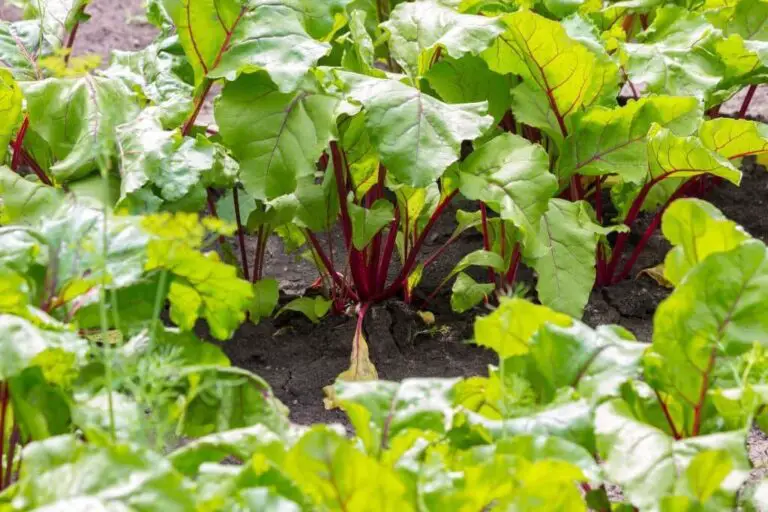Daffodil Bulb Ideas For Autumn Gardening: Fall Bulb Planting Brings Narcissus Spring Flowers
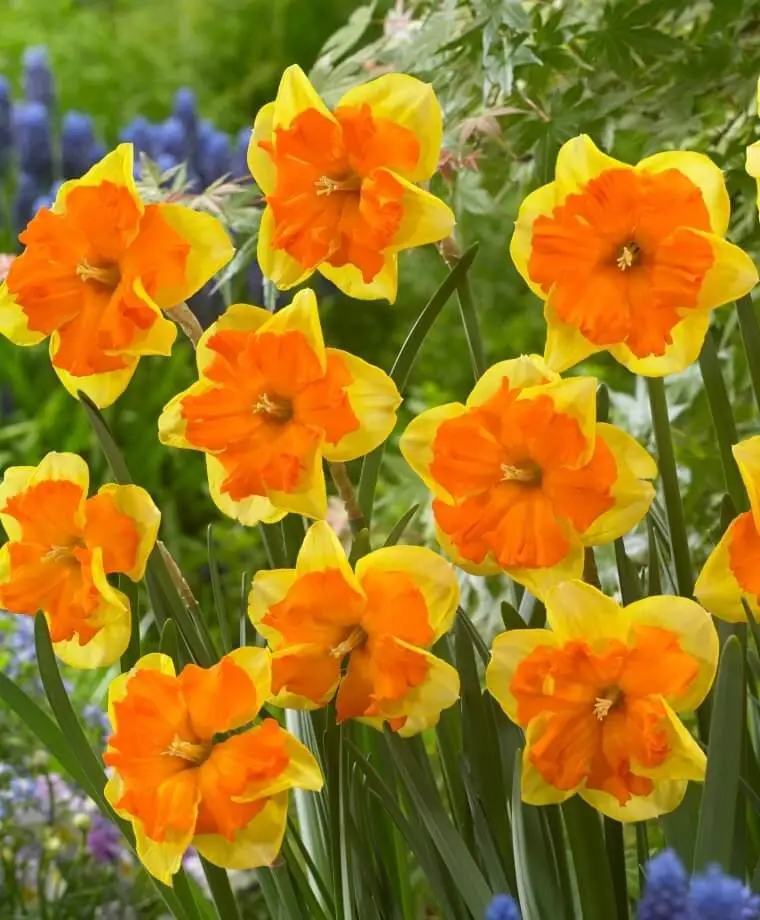
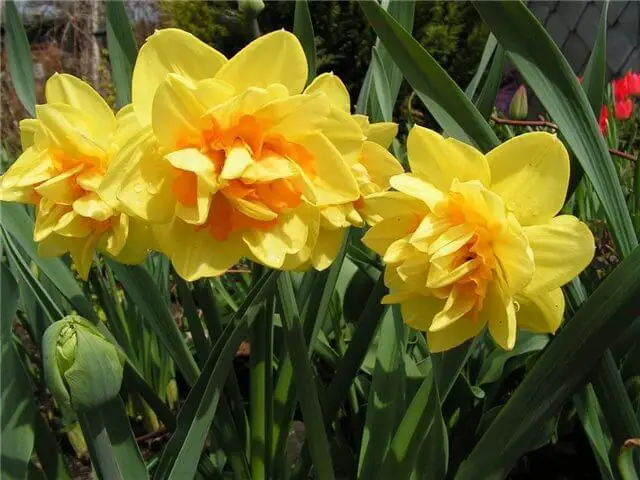
When it comes to autumn gardening, fall bulb planting can be a game-changer for your spring flower displays. And among the many options available, narcissus – commonly referred to as daffodils – offer a wealth of possibilities. With over 50 known species and countless cultivars, gardeners have an abundance of choices when it comes to selecting the perfect daffodil for their plot.
From the classic, fragrant blooms of Narcissus ‘Congress’, which boasts a delicate white and orange cup shape and grows up to 16 inches tall, to the vibrant, double-flowered ‘Magellan’ variety that sports a stunning yellow and orange hue, there’s a narcissus out there to suit every garden style. And with many varieties boasting overlapping bloom times, it’s easy to create a dynamic display of spring flowers.
Whether you’re looking to add a pop of color or create a sense of continuity in your garden, the humble daffodil is sure to deliver.
King Alfred Yellow Daffodils
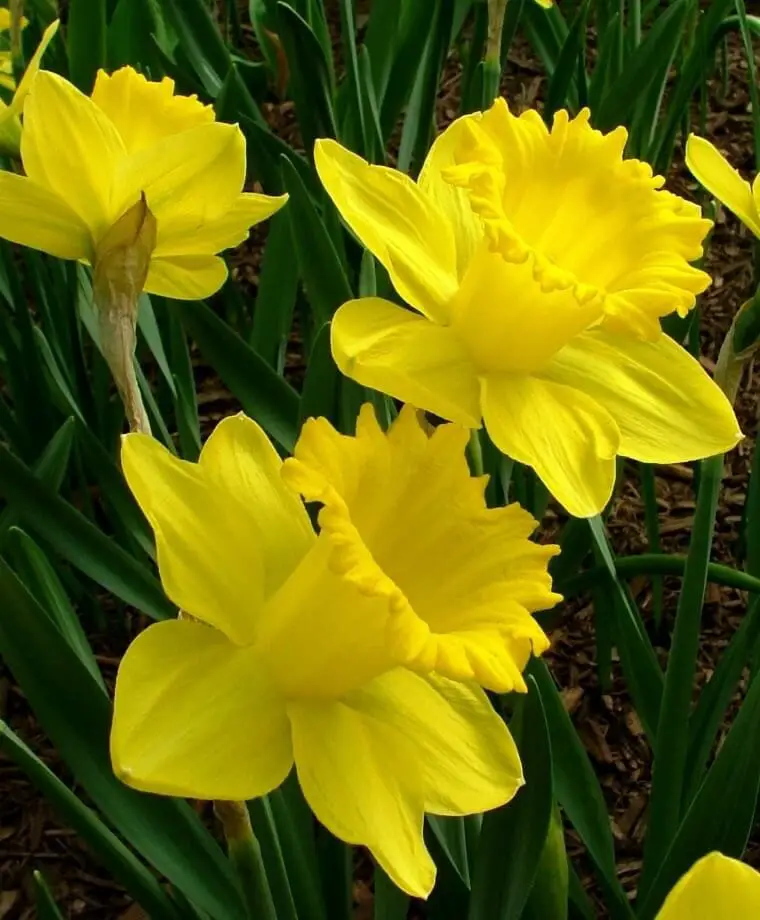
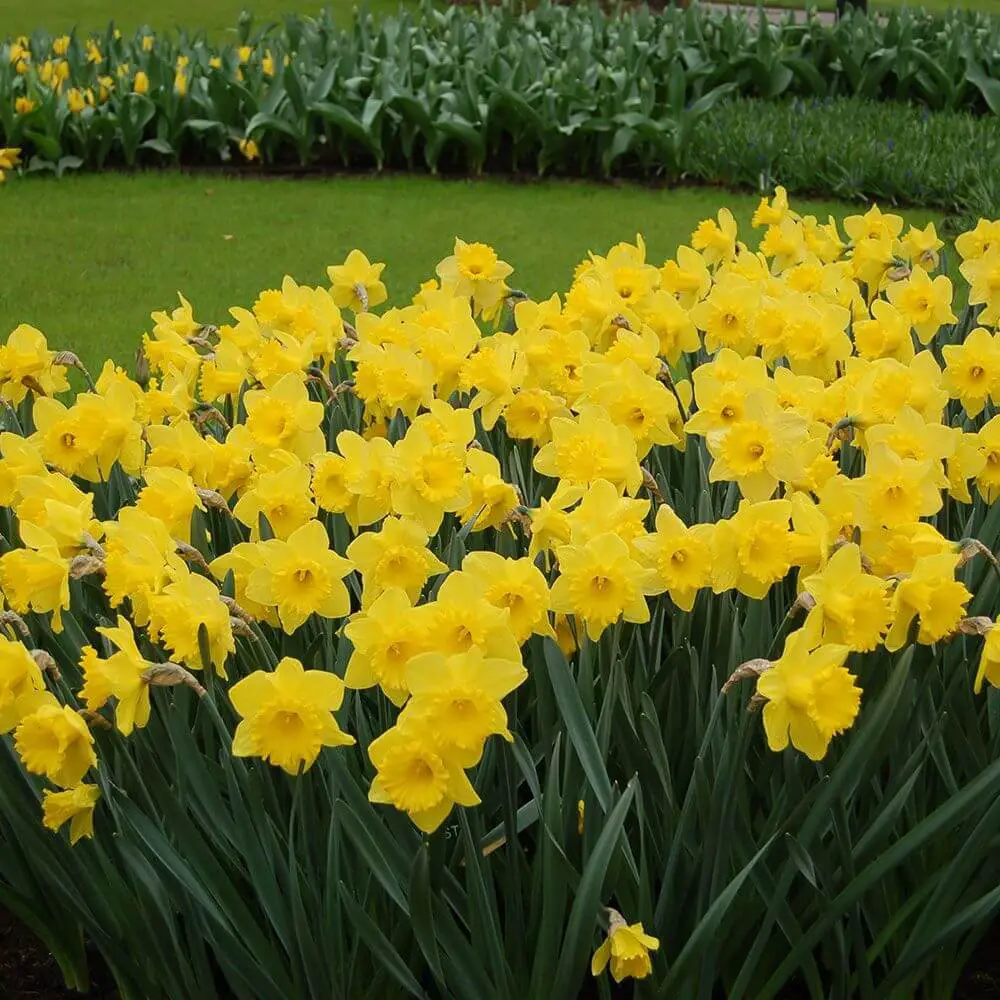
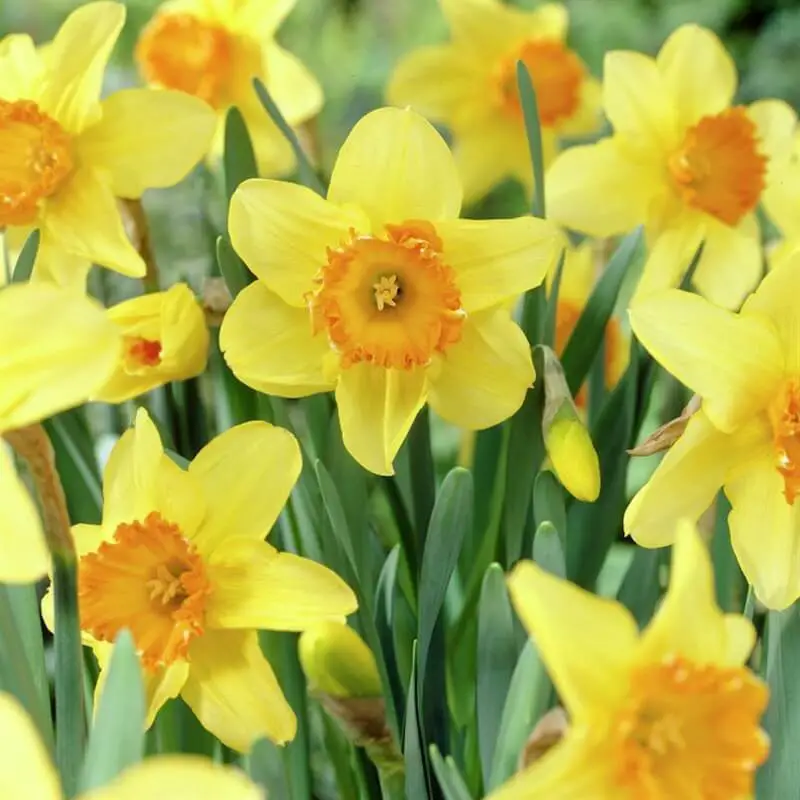
For garden enthusiasts aiming for the quintessential yellow daffodil look, improved King Alfred varieties stand out as top recommendations. Among these, the esteemed ‘Dutch Master’ cultivar of Trumpet Narcissus is a renowned choice, boasting an impressive hardiness that extends to zone 3, making it suitable for even the chilliest climates. Another notable trumpet type is ‘Juanita’, featuring a striking combination of orange cup and yellow petals.
This beauty blooms in early to mid-spring, with the added benefits of holding its flowers for an extended period, naturalizing effortlessly in gardens, and growing tall enough to make a statement. As with all trumpet daffodils, their resilience and showy appearance make them a fantastic addition to any garden.
Heirloom Narcissus Species
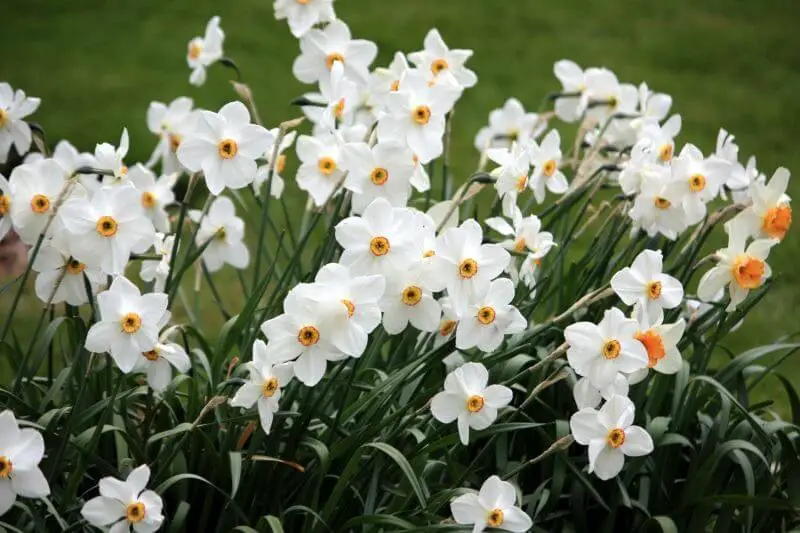


The poet daffodils, an heirloom species, boast a rich history. Their distinctive features include small, dainty cups of contrasting colors set against large white perianths. For a fragrant garden that shines in the spring, look no further than these scented beauties.
While ‘Poet’ is a late-spring bloomer that grows to 15 inches tall, it’s not the only heirloom daffodil worth mentioning. Narcissus jonquilla, for instance, features narrow reed-like foliage and fragrant blooms with smaller cups.
In some regions of the United States, ‘jonquil’ is a colloquialism for yellow daffodils.
For those seeking a true jonquilla experience in their heritage garden, ‘Intrigue’ is an excellent choice. This late-season bloomer shares many characteristics with its jonquilla cousins but remains as easy to grow as any common daffodil.
Tips on How to Grow Daffodils
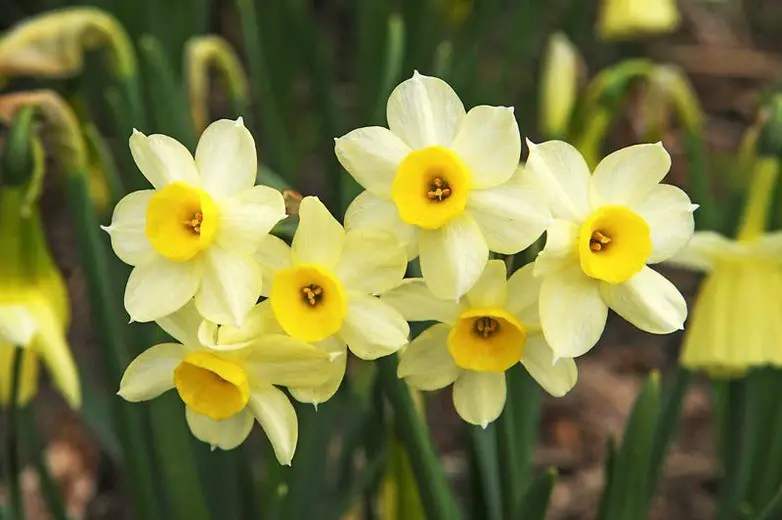
While some daffodils can flourish in tropical climates, most varieties require a period of cold weather to thrive. In general, daffodils prefer full to part sun locations and should be planted in fall at least six inches deep in well-draining soil amended with organic matter. For gardeners in warmer zones, such as those in the Southern United States, specific cultivars and varieties can help achieve success. For example, tazetta daffodils perform well in zones 5-9.
These plants typically require cooler temperatures and filtered sunlight to showcase their vibrant colors. Interestingly, what appears to be pink is actually a range of hues from light salmon to soft rose, often referred to as ‘horticultural pink.’ These varieties, known as pink large cupped daffodils, fare better in areas with moderate temperatures and filtered sunlight. In hot sunny gardens, the color may wash out.
As for post-blooming care, gardeners can cut off the foliage when the leaves begin to yellow. Some prefer to braid the green leaves for a neat appearance after the flowers have died.
Mixing Daffodils with Other Spring Bulbs
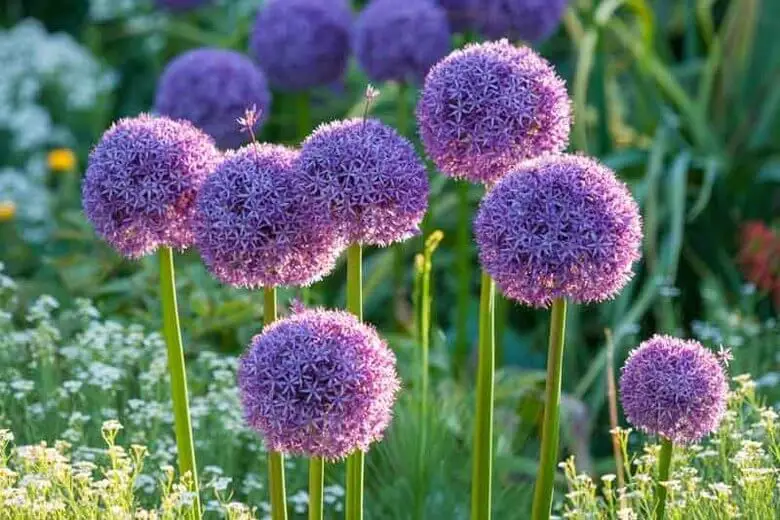
When it comes to spring flowering bulbs, Narcissus is an excellent choice for gardeners looking for a reliable and deer-resistant option. These bulbs can be planted alongside other spring bloomers in the fall, and their blue and yellow varieties will provide a lovely contrast with Muscari’s vibrant blooms. Both share the added benefits of being low-maintenance and returning year after year.
Another option to consider is Ornamental Allium, which not only repels deer but also comes in a range of sizes and colors, making it versatile for various garden themes. The sight of songbirds perched on larger globe-shaped Allium as they sway gently in the wind can be particularly charming. While Tulips are undeniably popular, they may not be the most economical choice for northern gardeners, as they don’t always reliably return each year.
However, with some strategic planning, it is possible to grow Tulips successfully and enjoy their vivid colors. Narcissus bulbs are incredibly easy to plant and can create a stunning display of spring flowers. Whether planted solo or mixed with other spring bloomers, these beautiful flowers will attract pollinators without drawing in deer.


